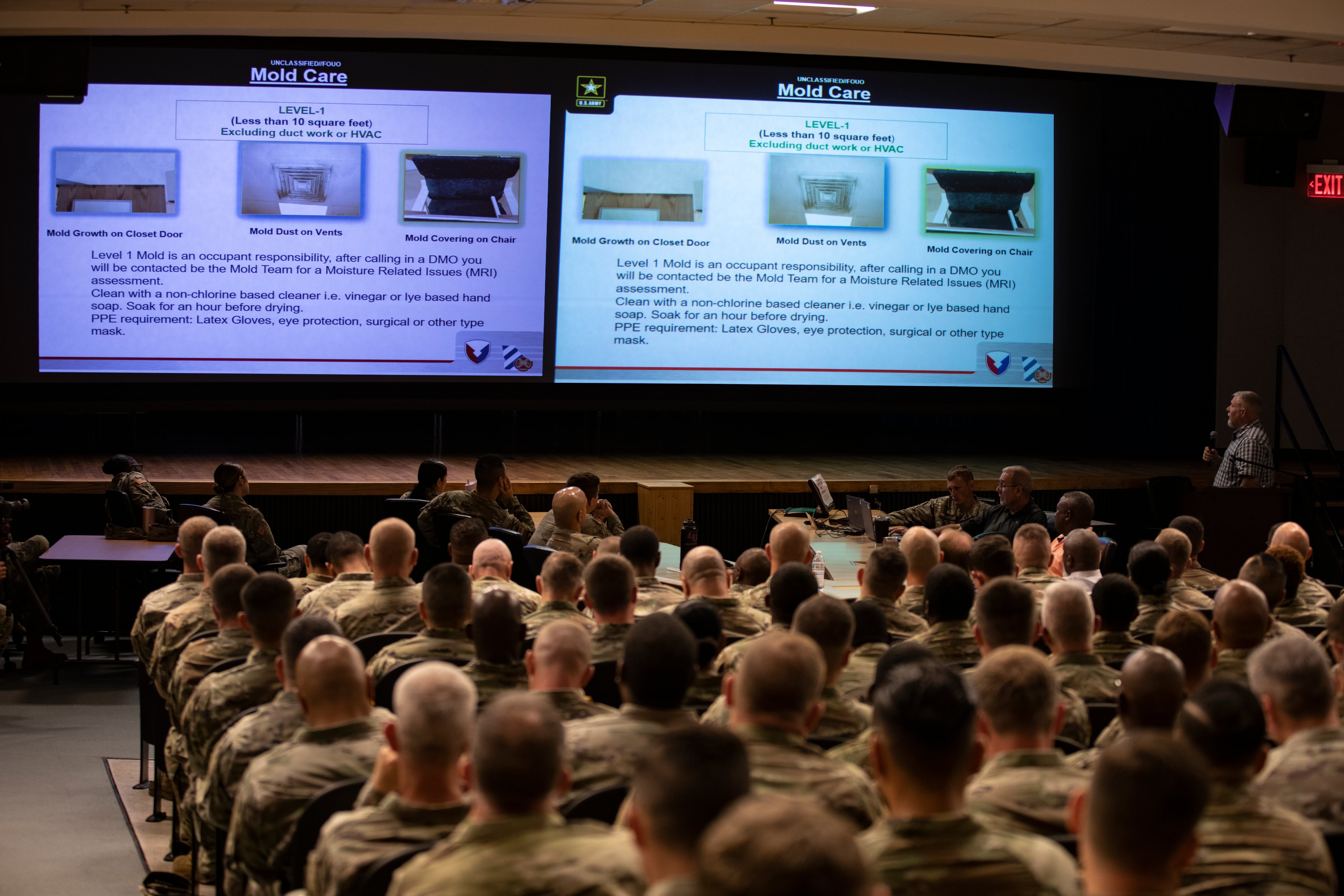The Army found mold in up to 2,100 of its facilities after a monthslong service-wide inspection, officials confirmed.
Service officials inspected nearly 70,000 buildings, including barracks, child care centers and Army-owned housing, service officials told Military Times via email Tuesday.
The majority of buildings impacted are located on installations in the southeastern United States — Fort Bragg, North Carolina, and Fort Stewart, Georgia, for example — as well as at Schofield Barracks, Hawaii.
The service announced the inspections in October after a series of reports by Military.com, which first reported on the investigation results. Officials later extended the deadline from late fall to early January to complete the review.
“The Army is committed to providing safe quality housing, barracks, and other facilities for our [s]oldiers, [f]amilies, and civilians,” Sarah Luna, a spokesperson for the Army’s Installation Management Command, told Military Times. “A critical aspect of this commitment is ensuring all facilities are free of hazardous mold.”
RELATED

The inspection data offers a broad view of the mold issues plaguing the Army, which can directly impact soldiers’ health and safety.
Nearly 1,200 soldiers at Fort Bragg needed to relocate to new living quarters last fall after an inspection found “higher than normal moisture levels,” conditions prime for mold, at the post’s Smoke Bomb Hill barracks.
Senior Army planners met in Texas at the end of January, using information from the inspection process to assess the service’s infrastructure priorities.
“That data ensures we make the best possible decisions to focus Army funding on the most pressing needs,” Paul Schaefer, a deputy director of logistics at Army Materiel Command, said in an Army release.
Leaders at Fort Stewart met earlier in March to plan for the installation’s new barracks, a project expected to be completed by the end of 2027, according to a service release.
“When we build the [new] ones, we need to incorporate a lot of the things we’re really just building in flight right now to mitigate mold and humidity,” Fort Stewart-Hunter Army Airfield garrison commander Col. Manny Ramirez said in the release.
Renovating and modernizing the 500,000-plus structures the Army owns and operates could be an expensive endeavor. The Army has more than $19 billion deferred maintenance costs alone, according to a partial study by the Congressional Budget Office released in November 2022.
The Army is looking for $288 million from Congress for barracks in 2024, including funding for five new barracks projects that are part of a 10-year, $10 billion investment plan.
Jonathan is a staff writer and editor of the Early Bird Brief newsletter for Military Times. Follow him on Twitter @lehrfeld_media




